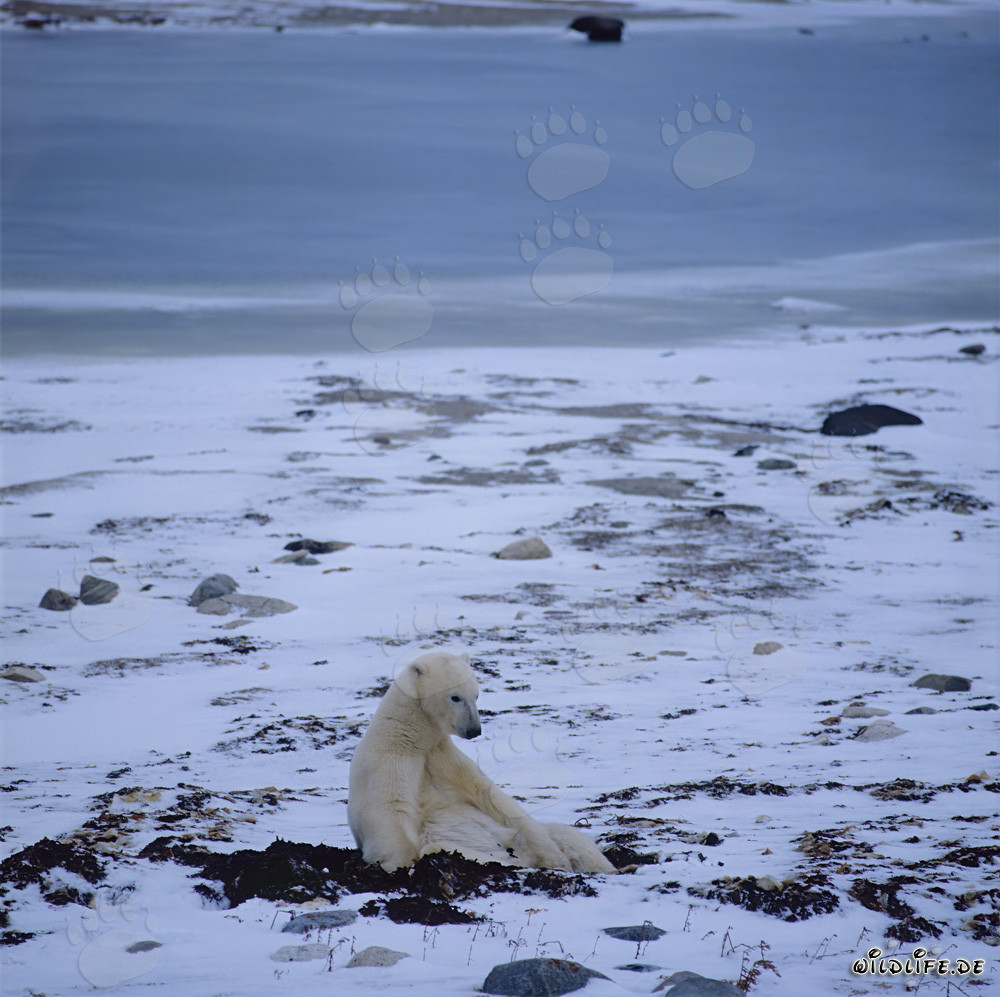A majestic polar bear resting in the Hudson Bay. Mid to late November freezes the Hudson Bay, and then he moves towards the open sea. (00090137)
Description: Polar Bear/Ursus maritimus A majestic polar bear resting in the Hudson Bay The Polar Bear, scientifically known as Ursus maritimus, lives in all Arctic coast regions. The Inuit call it “Nanook“ and believe in its supernatural powers. It is a large, muscular bear weighing 300 to 600 kilograms and measuring up to 3.5 meters in total length - from nose to tail. The largest known Polar Bear weighed 1,002 kilograms and was 3.65 meters long. The Polar Bear's fur is white to yellowish and has the ability to convert 95 percent of ultraviolet radiation into heat. Each hair of the fur - transparent and hollow - can capture light from any direction. The Polar Bear's fur provides optimal insulation and releases hardly any heat to the outside. The Polar Bear's diet consists mainly of meat, but also includes seaweed, crabs, sea birds, bird eggs, berries, carrion, and sometimes even flat fish. The Ursus maritimus is an excellent swimmer and has been seen several hundred kilometers out into the open sea. It is also a good diver and can stay underwater for up to two minutes. High in the north, west of Hudson Bay, lies Churchill, the city with Canada's most northern deep-sea harbor. Every year from late September to mid-November, when the Hudson Bay freezes - often temperatures drop below -50° Celsius -, the Polar Bears disappear abruptly from the coastal stretches. At this time, they stay up to 300 kilometers away from the land on the frozen bay. Here, they hunt for seals at the open watering places. They approach the seals lying on the ice, which can sometimes take hours, or they wait at the holes in the ice crust. Sometimes they also hunt for seals in the open water channels by swimming. In July, when ice starts to melt at the end of the Arctic spring, Polar Bears often let themselves be carried ashore on ice floes. Their destination is the mainland or the endless tundra along the coast. In late summer, they head north again. In this season, Polar Bears search for carrion of marine creatures. Their diet also includes land mammals and plants. In the northwest of Hudson Bay, they wait for frost and ice. Then the time of hunger is over, the cycle closes as soon as they have reached the open water channels with the seals.
Location: Manitoba, , Kanada
Date of Capture: 25.10.1992

